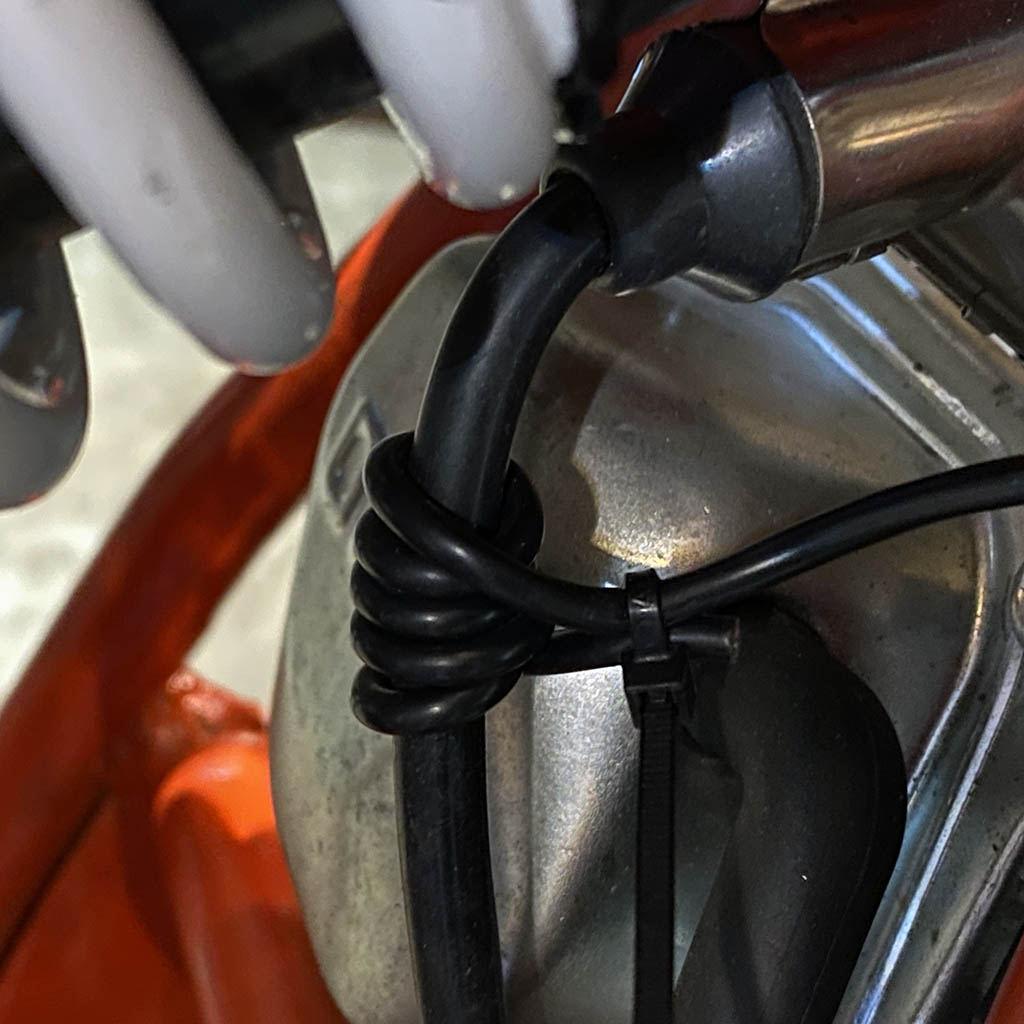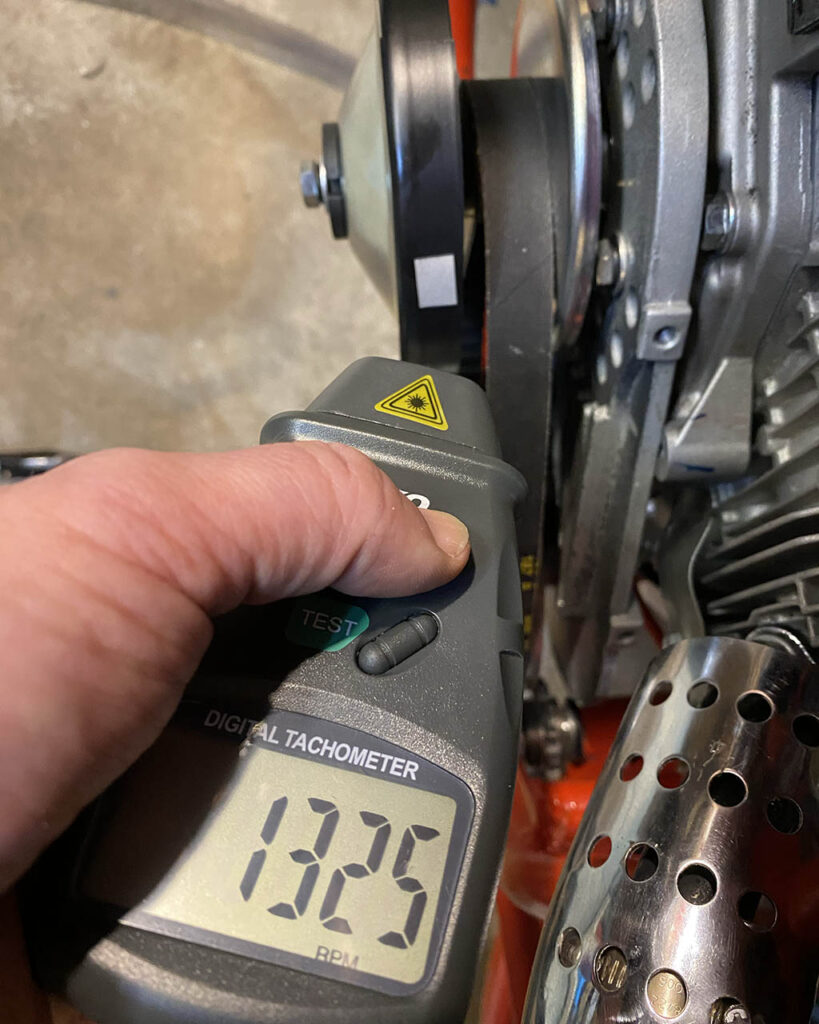I installed a Runleader RL-HM032C tach on my bike. It’s a fairly generic battery-operated, inductive, digital tach of the type you find all over Amazon and Ebay.
The simple ignitions on these motors run off the crank, not the camshaft, so they fire once per revolution, aka “wasted spark” ignition. So, I set the firing pattern to 1 spark per crank rev. I then wrapped the signal wire around the plug wire 4–5 times, as instructed:

I took the bike for a spin, and the indicated revs seemed unexpectedly high.
In the tach’s operating instructions, it had this disclaimer:
By adjusting the turns of winding, the appropriate adjustment can be made to improve the accuracy of the RPM and timing data.
Under normal conditions, increase the winding turns if the RPM is low, and reduce the winding turns if RPM is high.
Whaaat? How am I supposed to determine what’s an accurate reading? If I knew for sure whether the RPMs were too high or low, I wouldn’t need the damn tach unit!
To solve this, I bought a $20 optical tach off Amazon. These can measure the speed of any rotating shaft using laser reflections, so the ignition signal is immaterial. I had to wrap black electrical tape around the outside of the clutch to get the necessary contrast behind the reflective tape that comes with the unit. I started up the bike, and after a bit of trial-and-error to get the laser beam positioned properly, got a steady reading at idle.

And, waddayaknow, the Runleader tach was spot-on, within 15 RPMs of the handheld unit.
This tells me a couple of different things:
- I had my idle higher than I thought.
- My drive belt starts to engage higher than the 2000-2100 RPM speed I expected.
- My engine is blowing past the 4000 RPM safe limit of the flywheel long before the CVT maxes out the gearing, which I was hoping would not be the case.
The biggest conclusion for me is that I truly don’t know the first thing about CVT tuning.